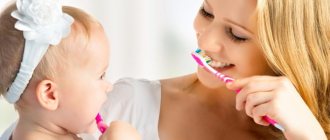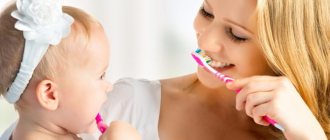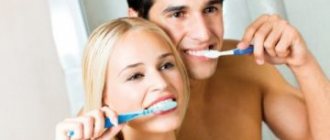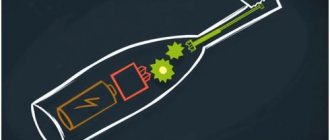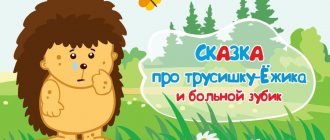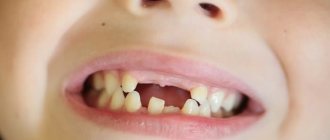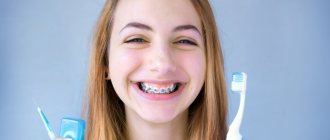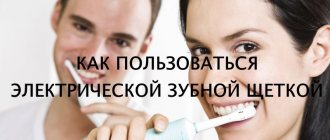How to make teething easier, rules for caring for first teeth
Sleepless nights, but such long-awaited first teeth! We rejoice at every white lump in our child’s mouth. And every time we ask ourselves the question: “How can I make teething easier for my baby? How to get rid of pain?
At the moment, the International Association of Pediatric Dentistry (IAPD) does not recommend the use of gels based on the anesthetic lidocaine.
Why? After all, each of us wants to make this period easier for the baby. Firstly, the relief will last only 2-3 minutes, and secondly, frequent application of such gels can lead to a toxic effect.
Why should you brush your baby teeth?
Many young mothers believe that brushing their baby teeth is not necessary because they will fall out anyway. However, decaying teeth
are always pain, discomfort and a source of spread of pathogenic bacteria.
How to brush your teeth correctly
How often, what to use, and in what mode is it better to brush your teeth? Detailed instructions for children and adults.
In addition, the early habit of brushing teeth becomes natural for the child and will help him preserve the health of his molars.
The order of appearance and change of teeth
Most often, baby teeth appear (and then change to molars) in the following order : lower incisors, upper incisors, upper lateral incisors, lower lateral incisors, canines. But the sequence may be broken.
However, the replacement of milk teeth with molars begin with the loss of the front incisors, as many believe, but with the appearance of molars , the most distant teeth in the jaw at that time, in the place of which there were no milk teeth.
How are the first teeth cut?
Teaching your child the rules of personal hygiene
Children are taught hygiene procedures from the first days of life. Find out how to teach your child to practice personal hygiene on his own.
The main symptoms of teething in infants are increased salivation and swelling of the gums.
The process is usually uncomfortable for the child and may be accompanied by increased moodiness and crying for no reason, insomnia and loss of appetite. A slight increase in temperature
(up to 38°C) may be a natural protective reaction of the body, but in this case the child should be shown to a doctor.
You can help the baby a little. Buy several teethers
- rubber or plastic toys for the child to bite on.
Chewing rings with liquid inside, which are first placed in the refrigerator to cool, has a particularly soothing effect. Additional methods
: Gently massage the baby's gums with a gauze pad soaked in cold water, or use baby teething gels with anesthetics, which the pediatrician will recommend.
When should I start using the paste?
Many moms and dads wonder when to start brushing their teeth with toothpaste. Answering it, our expert says that there are no restrictions as such in this sense. The main thing is to choose the right one according to age.
Today there are many types of pastes on the dental market. All of them are divided by age, so the samples intended for babies can be safely used from scratch. They contain no harmful substances, they are absolutely safe, and therefore can be used from the first tooth.
“Children’s toothpaste differs from adult toothpaste in its abrasiveness, or rather, its absence. Children's pastes are not abrasive, they contain less fluoride and do not have whitening properties. They are more gentle and prevent intoxication. Since children love to swallow toothpastes, there is no risk that it will have an undesirable effect,” explains the dentist.
Also, children's toothpastes, as a rule, contain aromatic additives to make the process of brushing teeth more pleasant and attractive for children. Manufacturers add different flavors to their products - strawberry, banana, apple.
You can switch to adult paste gradually, at the moment when the permanent bite of the teeth completely changes, that is, at the age of 12-13.
What foods are good for your first teeth?
Foods rich in calcium
.
First of all, it is cottage cheese and hard cheese. Slightly less calcium is found in milk, fermented milk products, green leafy vegetables, gooseberries, currants, and cherries. Sources of vitamin D, without which calcium cannot be absorbed, are egg yolk and butter. You should include carbohydrate foods in your child’s diet less often: bread, potatoes, and especially sugar and sweet foods. Sweets provoke the active proliferation of bacteria in the mouth, which leads to early caries
. “The longer you don’t offer your child sweets, the better,” says Kuznetsova, “for example, children under three years old should not be given chocolate at all.”
How to care for baby teeth?
From the moment the first baby teeth appear (6-8 months)
, and up to a year, parents should brush the child’s teeth with a special silicone brush placed on a finger at least once a day.
From the age of one year,
a child can brush his teeth twice a day with a very soft children's toothbrush, moving from the gums to the cutting edge or chewing surface of the teeth.
From 2-2.5 years old,
children's gel toothpaste should be used.
The amount of paste per cleaning should not exceed the size of a pea. From the age of 3,
children's teeth are brushed twice a day with a very soft toothbrush and children's toothpaste.
From the age of 2-3 years
, a child can be taught to brush his teeth independently under the mandatory supervision of his parents.
Pediatric gingivitis
As a result of plaque accumulation, your baby may develop gingivitis. When cleaning your child's mouth, pay attention to the condition of his gums. Their redness and swelling are a sign of the onset of the disease. Another symptom is bleeding gums, which you may notice after brushing your teeth.
Regular thorough oral hygiene and professional teeth cleaning at a dental clinic can help you get rid of childhood gingivitis. If the necessary measures are not taken in time, periodontitis may develop, and then the child will require more serious treatment, including surgery.
To keep your baby's gums and teeth healthy, start regular oral care immediately after birth and be sure to take your baby to the dentist before he or she turns one.
Choosing a brush and toothpaste for your baby
How to choose a toothbrush
Conventional, electric or ultrasonic? Soft or hard? Synthetic or natural? Accurate answers to all questions.
A baby toothbrush looks like this.
It has a short working part - from 18 to 25 mm. Until the age of five, a child has a brush with very soft (extra soft) synthetic bristles, and from a later age - with soft bristles with rounded ends. The handle of the children's brush is thicker, with non-slip inserts - this makes it easier for the baby to hold it. Children's toothpastes
are also different from adults. They are low in abrasives, low in fluoride, and contain fruity fragrances and flavors. Look carefully at what age of children this or that toothpaste is intended for.
How to choose the right toothpaste for your child -
To be honest, I have almost no idea how ordinary parents can navigate the abundance of conflicting information about the dangers and benefits of various children’s toothpastes, because up to 99% of all reviews about toothpastes on the Internet are hidden advertising or anti-advertising. In addition, the Internet has long turned into a garbage dump - after all, half of the sites contain absolutely irrelevant information that has not been updated for decades. Here are some examples.
Women's forums and blogs are filled with shocking articles about the dangers of parabens (preservatives) and sodium lauryl sulfate (SLS), about which various horror stories have been written. For example, that parabens are carcinogenic and accumulate in tissues, destroying the lungs and brain, and also that they can disrupt the endocrine system, exhibiting estrogenic activity. Regarding carcinogenicity and organ toxicity, this is generally not true (clinical studies), but as for estrogenic activity, this is a very interesting topic.
The fact is that parabens are a whole group of substances, which includes methylparaben, ethylparaben, propylparaben, isopropylparaben, butylparaben, isobutylparaben, and benzylparaben. So, toothpastes usually use only parabens with small chain sizes (these are methylparaben and ethylparaben). According to authoritative research, short-chain parabens do not have estrogenic activity at all, but long-chain parabens (for example, isobutylparaben) do.
But the most interesting thing is that the estrogenic activity of isobutylparaben is 240,000 times! less than estradiol (this is the most active female sex hormone of the estrogen group). Therefore, it may not have any clinical significance. But why it is really not advisable to include parabens in children’s toothpastes is due to possible irritation of the mucous membrane or the development of allergic reactions on the oral mucosa (according to statistics, this occurs in approximately 4% of children).
The same applies to the harm of sodium lauryl sulfate (SLS), the whole fault of which essentially lies only in accelerating the desquamation (desquamation) of the epithelium of the oral mucosa. Therefore, if a child uses toothpaste with SLS and has predisposing factors to the development of stomatitis or thrush, the frequency of repeated cases of stomatitis, as well as their severity, may be higher (compared to children who use toothpaste without SLS) . You can read about this in an authoritative study at the link (source), but if you don’t know English, use a browser translator.
Overall, I hope you will think about this information and begin to think more critically about information on forums and blogs. And we argue our point of view - not only with the dental education of the author of the article (with more than 20 years of experience), but also always provide links to the most authoritative clinical studies.
Now, more about choosing children's toothpaste -
On our website there is a separate article with a rating of children's toothpastes (for 2022). But in this section we would like to talk about the strategy for choosing toothpaste for children of different ages - from 0 to 2 years, from 2 to 6 years, and from 6 to 12 years. The fact is that there is a lot of outdated information on the Internet, and we want to tell you about the latest recommendations from the most reputable medical organizations. Those. everything we discuss below is recommended by the following organizations:
- "WHO" (World Health Organization),
- "EAPD" (European Academy of Pediatric Dentistry),
- "AAPD" (American Academy of Pediatric Dentistry),
- "AAP" (American Academy of Pediatrics),
- "StAR" (Russian Dental Association), etc.
The main question for parents - with fluoride or without fluoride
Fluoride-containing toothpastes have high anti-caries activity (unlike calcium-containing toothpastes without fluoride), however, excess fluoride intake into the body increases the risk of developing dental fluorosis. Fluoride cannot penetrate the oral mucosa, and its entry into the body during brushing is associated exclusively with involuntary swallowing of toothpaste. The latter is possible in children under 4-6 years of age, because At this age, children have not yet developed a fully controlled swallowing reflex.
But in order for a child to develop dental fluorosis, he needs to swallow almost half a tube of toothpaste every day . But this is impossible, because The recommended amount of toothpaste is much less. And therefore, swallowing fluoride toothpaste can be dangerous - only if you live in a region with a high level of fluoride in drinking water, or if you feed your child nutritional formulas enriched with large amounts of fluoride. If these 2 main factors are absent, then swallowing a small amount of fluoride toothpaste every day will never lead to the development of fluorosis.
→ Regions with high levels of fluoride in drinking water
In short, these regions include some areas of the Moscow region, Kirov, Vladimir, Samara, Ryazan, Tver, Irkutsk, Yaroslavl, Kaluga, Kemerovo regions, as well as Karelia and the Republic of Mordovia (source - see the link above). The ideal fluoride content in tap water is 0.7 mg/l, and exceeding this figure to 1.0-1.2 mg/l already statistically significantly increases the risk of developing fluorosis.
It is also important to consider that water filtration systems operating on the principle of reverse osmosis reduce the fluoride content in water by approximately 84%, and carbon filters by at least 81% (this was proven by research by Brown MD and Aaron G., publication in the journal " Pediatr.Dent" for 1991). Therefore, even if you live in regions with a high level of fluoride in water, your child’s fluoride intake may be within normal limits (the main thing is that you do not forget to regularly change the cartridges for your filter, and also do not give it bottled or spring water).
Table 1 is the recommended total daily fluoride intake for children 0 to 19 years of age. Link to scientific publication (Source - US National Academy of Sciences).
What else is very important. The risk of developing fluorosis only exists in children between 0 and 6 years of age, with the most important period being between 0 and 2 years of age. Excess fluoride consumption after 6 years can no longer lead to the development of fluorosis in permanent teeth. Therefore, regarding the prescription of fluoride toothpaste to a child from 0 to 2 years old, it is better to consult your dentist to be on the safe side.
If your child does not have carious teeth (or there are only isolated cases of caries), in this case you can safely use calcium-containing toothpastes without fluoride , but it is imperative that it contains a high dosage of xylitol/xylitol. Xylitol is a sweetener that also has anti-caries activity, although it is less than fluoride. It is best when fluoride-free paste contains a combination of several calcium compounds at once - this can be calcium lactate, calcium pathotenate, calcium glycerophosphate and hydroxyapatite.
If your child has new carious lesions regularly, then, provided there is no excess consumption of fluoride in drinking water and milk formulas, fluoride toothpaste can be prescribed even from 0 to 2 years. Previously, the concentration of fluoride in toothpastes for children of this age was only 500 ppm, but since 2022, WHO (World Health Organization), as well as all other organizations listed above, have changed the recommendations to 1000 ppm. The main thing is not to exceed the recommended amount of toothpaste.
Table 2 – recommended concentration of fluoride in toothpaste for children. This is data from a very authoritative organization - the European Academy of Pediatric Dentistry (EAPD). Link to scientific publication (source).
Therefore, it is considered safe for children 0 to 2 years of age to use toothpaste with 1000 ppm fluoride—about the size of a small pea (or a large grain of rice). For children from 2 to 6 years old, the volume of toothpaste with 1000 ppm fluoride should be about the size of a large pea. An important point - if your children's toothpaste contains only 500 ppm of fluoride, then to achieve exactly the same content of fluoride ions - you just need to use 2 times the volume of toothpaste than stated above.
Volume of toothpaste with fluoride 1000 ppm (up to 2 years, and after 2 years) –
Toothpastes if your child has frequent stomatitis -
In early childhood, children experience fairly frequent outbreaks of various forms of stomatitis on the oral mucosa. You can, of course, regularly treat aphthous and herpetic forms of stomatitis. But it is much more effective to use special toothpastes to prevent stomatitis, which increase the protective properties (local immunity) of the oral mucosa - due to the content of lactoperoxidase, lactoferrin, glucose oxidase and lysozyme. These enzymes are part of “SPLAT Junior” and “SPLAT Baby” (Fig. 12-13).
Can a child use mouthwash?
As a general rule, mouthwashes are not recommended for children under 6 years of age. It is at this age that children develop the skill of not swallowing liquids when necessary and spitting them out. It is important to note that mouthwashes are not a substitute for traditional teeth brushing. They in no way help to clean your teeth, but they help strengthen your teeth enamel due to their fluoride content.
What parents need to remember
The baby should see the dentist for the first time at six months, and the first tooth should be cleaned with a special brush.
Sweets harm the first teeth, but daily brushing with a special children's brush and toothpaste is beneficial. Tags:
- Hygiene
- Teeth
- Preschoolers
- Babies
- Kuzmina
3 comments • To leave a comment you must be an authorized user
- few Hello everyone. I wanted to recommend a cool service to you. Using this service, you can find out for free on your phone. You can also read reviews about the numbers or leave your own if a scammer calls you. Thank you for reading my post. I create useful services for people. https://kto-zvonil.net https://kto-zvonil.net https://kto-zvonil.net https://kto-zvonil.net https://kto-zvonil.net https://kto -zvonil.net https://kto-zvonil.net https://kto-zvonil.net https://kto-zvonil.net https://kto-zvonil.net
- tancuet massage "methods: gently massage the gums"
- irina_golovleva at 6-8 months a child can be given hard cheese, gooseberries, currants, cherries???????!!!!!!!!!!!!!!!!!!!!!!!!!!! !!!
Hygiene procedures and age characteristics of the child
At the age of 1 to 2 years, it is unlikely that it will be possible to force children to brush their teeth on their own. When the child picks up the brush for the first time, he will simply play with it. Don't disturb him, let him get used to the accessory. When helping the baby, be careful and careful in your movements. Any discomfort and pain can discourage you from caring for your teeth for a long time.
The ideal age for independent mastery of skills is 2–3 years. At this age, kids go through a very interesting period called “I myself.” They are eager to try everything and they need to take advantage of this moment. Get interested in the process by your own example and show how to properly brush your teeth. If necessary, guide the baby's hand, praise him and never scold him if he fails to cope with the task. It is these first inept attempts that allow you to remember the movements and hone your skills over time.
If a child under 5 years old categorically refuses to go to the bathroom and pick up a toothbrush in the morning, take a break. Let him forget unpleasant associations and impressions. During this period, you can read useful books and unobtrusively offer special educational cartoons, which tell in an entertaining way the importance of daily brushing and caring for your teeth. Tell stories about children who don’t take care of their teeth and show pictures that clearly show what protest can lead to. It is easier to convince, persuade and teach an interested child. The main thing is that the initiative comes from him, otherwise repeated attempts will result in failure.
When teaching a skill, do not frighten children. You won't achieve anything by making up stories about evil microbes and monsters called Caries that come and take your teeth. Horror stories will only do harm and completely discourage you from picking up a toothbrush. Do not traumatize the child's psyche.
There are difficult cases when at 7 years and older children do not want to brush their teeth. Persuasion and coercion will no longer work, but persistence without shouting, hysterics and coercion can be demonstrated in such situations. Go to the dentist. Good children's specialists know what to say about the importance of hygiene procedures and will definitely help with advice.
